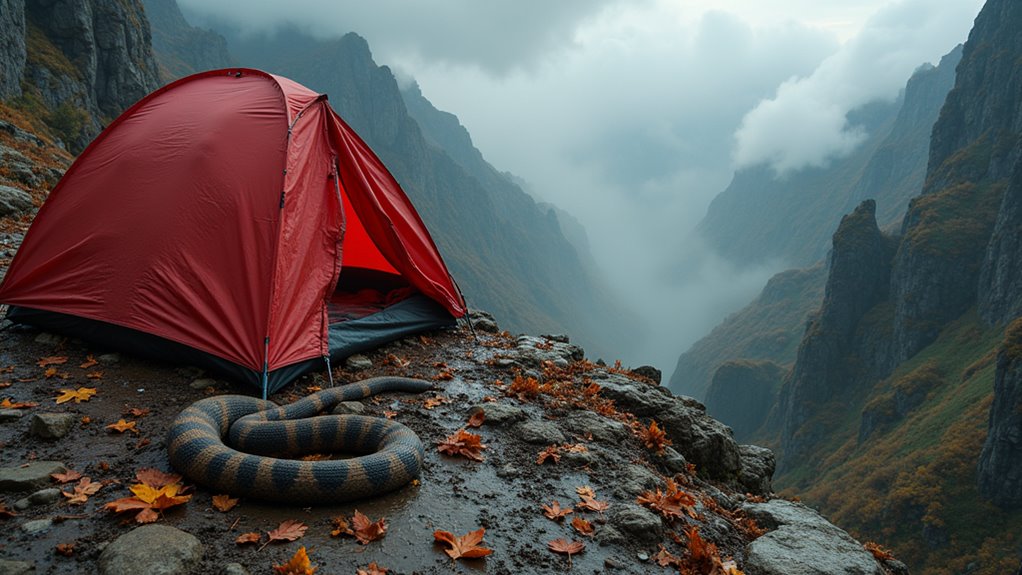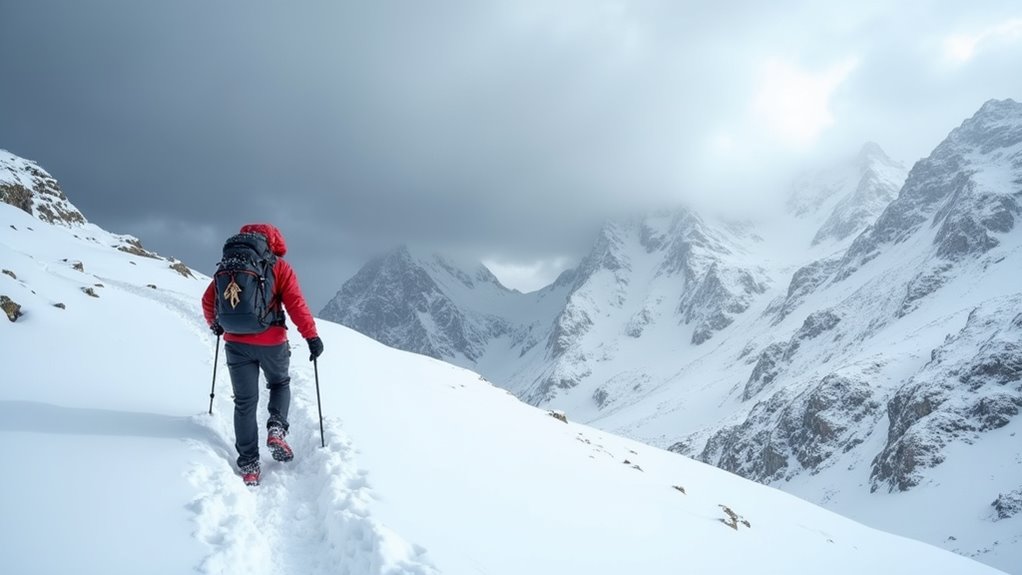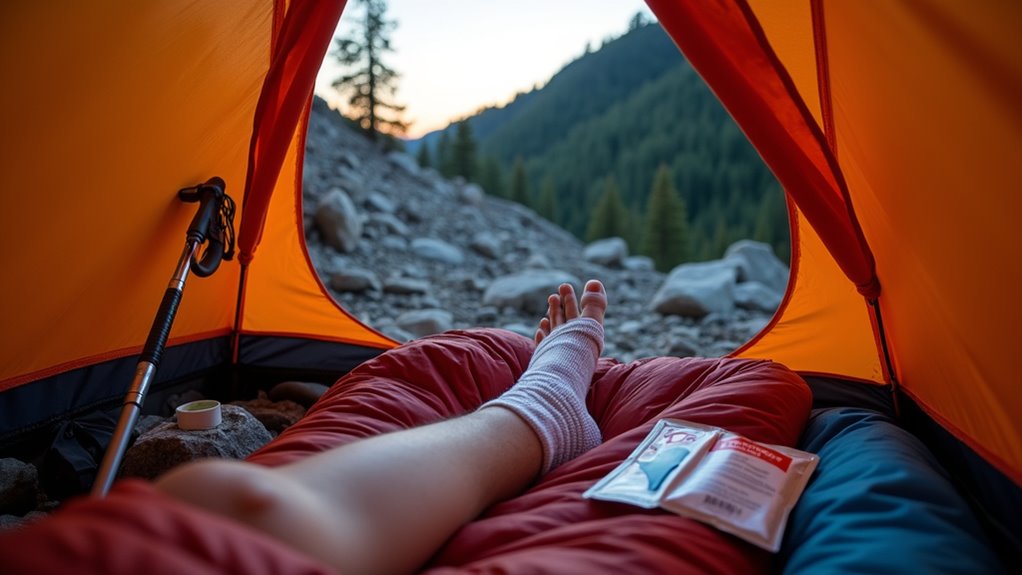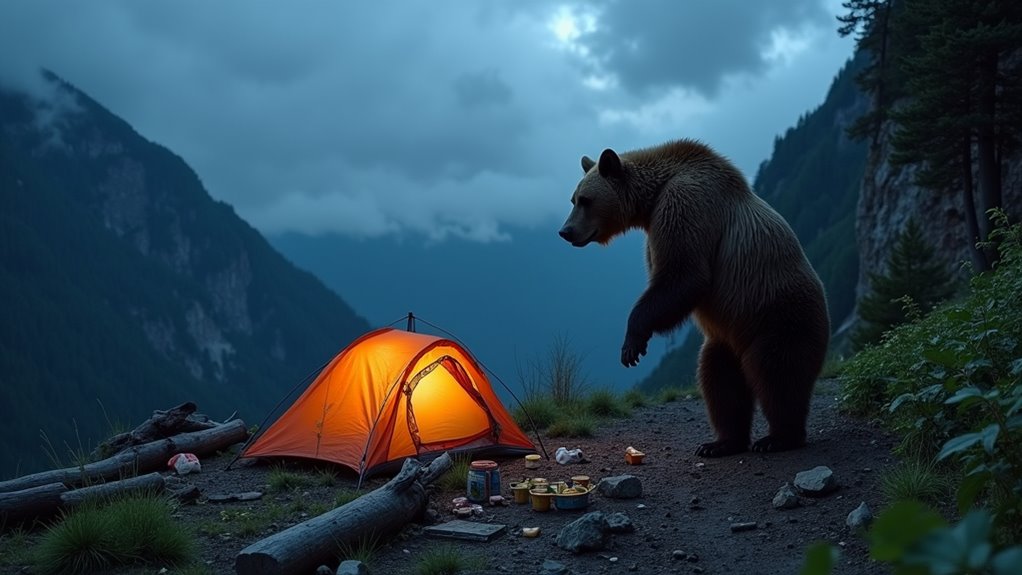Physical Address
304 North Cardinal St.
Dorchester Center, MA 02124
Physical Address
304 North Cardinal St.
Dorchester Center, MA 02124

Brave campers face deadly risks in the wild, but knowing these common dangers could mean the difference between life and death.
Every year, thousands of inexperienced campers face life-threatening situations they never saw coming. You’ll find that adventure camping isn’t just about stunning views and peaceful nights under the stars – it’s a pursuit that demands your constant vigilance and preparation. From sudden weather shifts to unexpected wildlife encounters, the wilderness holds both wonder and danger. If you’re planning to venture into the backcountry, you’ll need to understand what you’re truly up against.

While adventure camping offers exciting outdoor experiences, it comes with serious weather and exposure risks that demand careful attention.
Adventure camping delivers thrilling outdoor moments but requires vigilant awareness of weather hazards and environmental exposure risks.
You’ll face threats from lightning strikes during outdoor activities, with nearly one-third of fatalities occurring during recreational pursuits. Since 2006, camping and hiking have accounted for 35 recorded deaths from lightning strikes. Flash floods can develop rapidly, even when it’s not raining directly above you.
You’re also vulnerable to temperature extremes. Intense heat combined with humidity can trigger heat-related illnesses, while inadequate protection from cold can lead to hypothermia. Winter camping requires special considerations to stay safe and comfortable.
Sun exposure demands vigilant protection, and high-altitude environments require proper acclimatization. Don’t overlook the dangers of carbon monoxide when using fuel-burning equipment indoors.
You’ll need to monitor weather forecasts consistently and maintain awareness of changing conditions, as storms can approach unnoticed, especially in mountainous terrain where visibility is limited.
Despite the best preparation, critical medical emergencies during adventure camping can quickly become life-threatening due to delayed access to professional care.
You’ll face the highest risk from cardiac events, which remain the leading cause of wilderness medical fatalities. Watch for chest pain, sudden weakness, or breathing difficulties that may signal a serious heart condition. Staying hydrated and maintaining a healthy diet can help reduce the risk of cardiac issues.
You’re also likely to encounter infectious diseases, particularly respiratory and gastrointestinal illnesses that spread rapidly in camp settings. These account for nearly a third of wilderness medical issues. Falls and injuries requiring wilderness rescues are extremely common, with Boulder County alone reporting over 2,000 such incidents over a 13-year period.
Altitude sickness, severe allergic reactions, and acute gastroenteritis can quickly deteriorate into severe conditions requiring evacuation. You’ll need to act fast when these emerge – recognize the symptoms, implement your emergency response plan, and don’t hesitate to call for evacuation if someone’s condition worsens.

During adventure camping, physical injuries pose one of the most immediate threats to your safety and well-being. Falls account for over half of all incidents, primarily resulting in soft tissue injuries, lacerations, and musculoskeletal issues.
Physical injuries, especially from falls, remain the top safety concern during adventure camping, often leading to serious tissue and muscle damage.
Your legs are particularly vulnerable, comprising 36.6% of reported injuries, followed by upper extremities and shoulder injuries.
You’ll greatly reduce your risk by using proper gear, maintaining good physical condition, and attending safety briefings before activities. Data shows that about 77.4% of incidents involve soft tissue lacerations rather than more severe injuries.
Don’t underestimate the impact of environmental factors – wet surfaces, difficult terrain, and poor visibility can quickly lead to accidents. Navigating the Risks of Adventure Camping is crucial to preventing such incidents.
Statistics show that hiking carries the highest injury risk among outdoor activities, with about 2.2 injuries per 100,000 visitors in national parks.
Always plan your routes carefully and stay within your skill level to prevent accidents.
When you’re near water during adventure camping, understanding proper safety measures can mean the difference between life and death. Always wear a U.S. Coast Guard-approved life jacket and swim with a buddy in designated areas, preferably near lifeguards.
Be mindful of hidden dangers like debris and slippery rocks that can cause serious injuries. You’ll need to maintain constant supervision of children near water, as drowning can occur quickly and silently. With over 30,000 injuries occurring annually during camping activities, water safety cannot be overlooked.
Know your GPS location for emergencies and learn CPR before your trip. Don’t forget to check for harmful algal blooms, which can cause severe illness. Essential tips for safe festival camping can help ensure your adventure is both exciting and secure.
If you’re planning to drink from natural water sources, boil or filter the water properly. This is especially essential for children, pregnant women, and those with compromised immune systems who face higher risks of waterborne illnesses.

Adventure camping’s impact on the environment creates a cycle of hazards that can endanger both campers and wildlife. When you camp in high-traffic areas, you’ll notice exposed soil, damaged trees, and eroded landscapes that increase the risk of accidents and destabilize wildlife habitats.
Your presence can disrupt natural animal behaviors, leading to potentially dangerous encounters. As vegetation disappears and soil erodes near campsites, wildlife may venture closer to human areas searching for food. Bears, raccoons, and other animals become habituated to human food when campers don’t properly store provisions. This habituation often results in aggressive scavenging behavior. Research shows that approximately 36,000 tree stumps were found across camping areas, significantly reducing natural protective barriers between wildlife and humans.
Wildlife and summer camping can create a harmful cycle of environmental degradation and dangerous encounters. You’ll also face risks from degraded terrain, including unstable ground near water sources and weakened tree structures. The loss of natural ground cover and organic soil layers can make campsites more susceptible to flooding and collapse.
You’ll face many dangers while adventure camping, from unexpected lightning strikes to sudden flash floods, and from twisted ankles to unwanted bear encounters. Whether you’re scaling peaks, crossing rivers, or setting up camp, you’re constantly managing risks. By staying alert, following safety protocols, and respecting nature’s power, you’ll minimize these threats and return home with incredible memories instead of injuries or close calls.